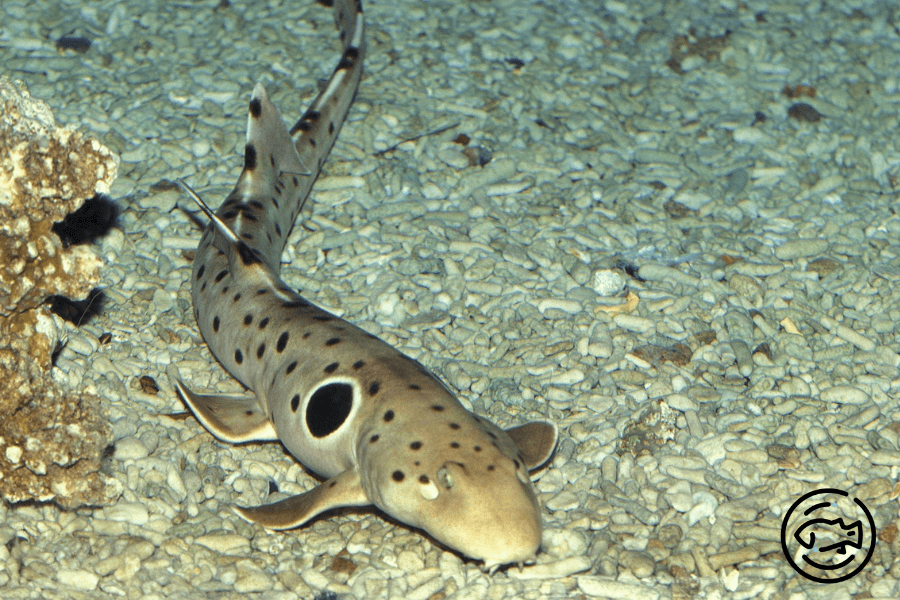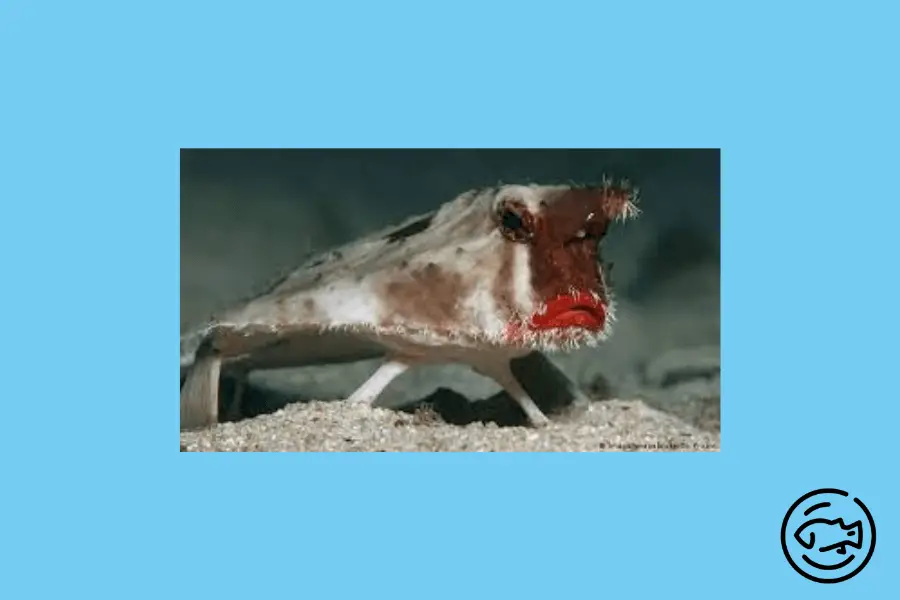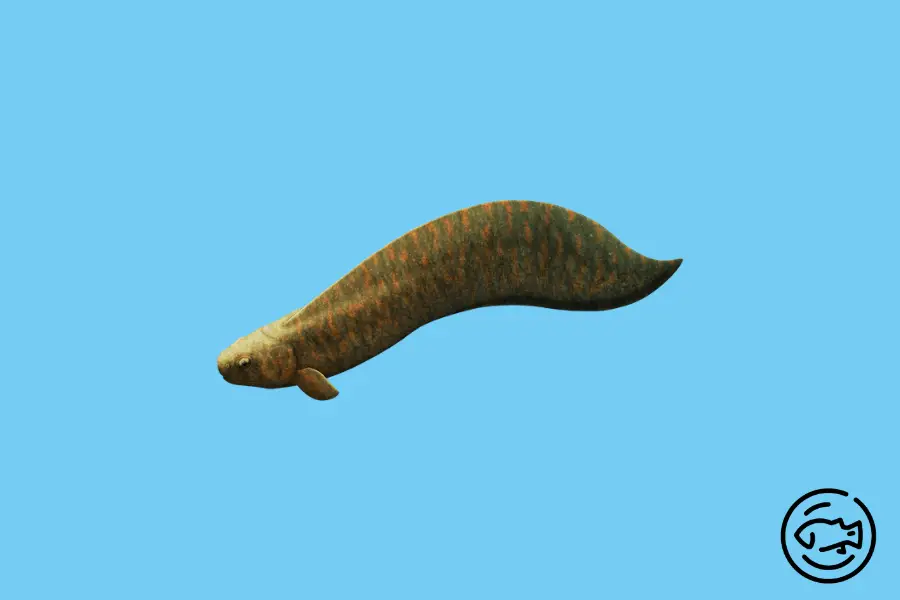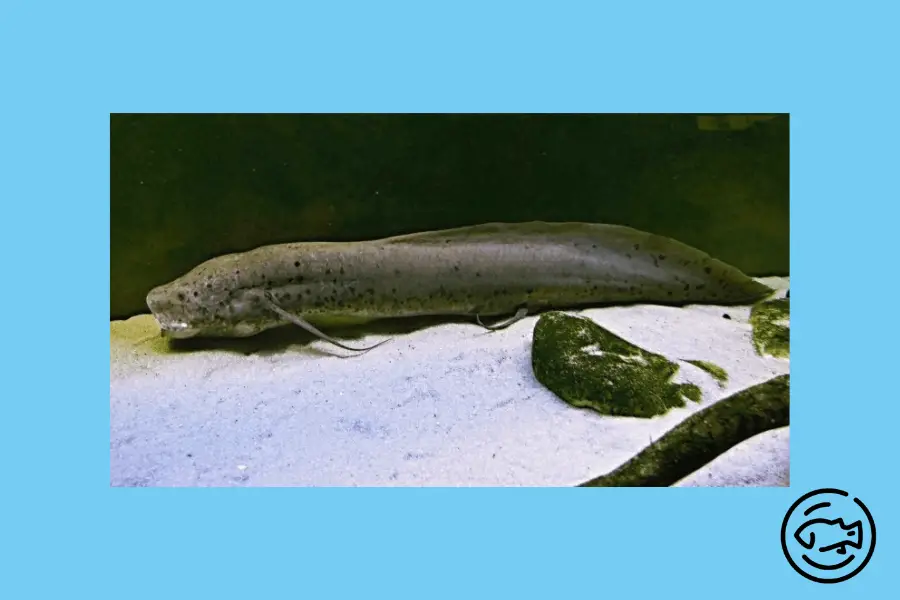Imagine a fish with legs. That fish would be pretty weird, right?
Sure! Many people have agreed that it would be highly unusual for an aquatic creature to walk around on four legs.
You contend that most people haven’t thought about that, though – if they have, it’s likely been relegated to the background as a matter of science fiction or philosophy.
But what if such a beast did exist? Would it also thrive in this world?
After all, nature is resilient and has no problem rooting out what it needs from the surrounding environment. In this article, we will fish with legs.
1. Hemiscyllium Ocellatum

Hemiscyllium ocellatum, also known as the leopard or zebra shark, is a species of cartilaginous fish in the family Hemiscylliidae.
The leopard shark is a small but stocky species with a flat body and broad head. It has no anal fin and a pair of dorsal fins placed far back on its body.
The first dorsal fin has a short spine at the tip, while the second dorsal fin has no spines but has one to three large keels.
This species can grow up to 1 m (3 ft 3 in) in length and weigh up to 10 kg (22 lb). Its coloration is variable, but typically it has dark brown spots on its back and white spots on its sides and belly.
Leopard sharks are found in tropical waters around Australia, Indonesia, New Guinea, and northern Queensland. They live on muddy or sandy bottoms between 2 m (6 ft 7 in) and 140 m (460 ft), where they feed on small fish, shrimp, squid, and crabs.
2. Polypterus Bichir Lapradei
The Polypterus Bichir is a freshwater fish with back legs and can walk on land. It is also known as the walking fish, the bichir, or the four-eyed fish.
It is native to Africa and Asia and is found in rivers, lakes, and wetlands. They are carnivorous fish that feed on small fish, insects, crustaceans, and tadpoles.
The Polypterus Bichir can grow up to 2 feet long, but they have reached up to 6 feet long when kept in captivity. The young have been known to grow up to 3 inches long after one year of growth in captivity.
The Polypterus Bichir has a large mouth with sharp teeth located at the front of its face that help it catch its prey as well as protect itself from predators such as larger fish who may try to eat them for their size or even humans who may want to keep them as pets for their unique appearance which makes them very popular among aquarium owners worldwide.
3. Brachionichthys Hirsutus

The brachionichthys hirsutus (also known as the hairy dwarf-herring) is a small fish with legs in marine waters worldwide.
It has three pairs of fins, two pectoral and one caudal.
The caudal fin is fan-shaped, while the other fins are both sickle-shaped.
The body of this species is brownish-grey in color with darker spots on its back which are more prominent during the breeding season.
The eyes are located on the top of its head, with a pointed snout and a small mouth with no teeth.
The dorsal fin starts at the middle of its body and ends before reaching the caudal fin. They have three barbels near their mouth which help them find food on the ocean floor.
4. Ogcocephalus Darwini

The Ogcocephalus Darwini is a species of fish with legs native to the planet Pandora.
It is also known as an “Og” or a “legfish.” They are omnivorous predators and scavengers, eating anything from worms to small birds.
In appearance, the Ogcocephalus resembles an average fish with four legs instead of fins. It has bright orange eyes and several rows of sharp teeth lining its mouth.
5. Tarrasius Problematicus

Tarrasius Problematicus is a species of fish with legs. It lives in freshwater environments and can be found in lakes, swamps, rivers, and streams.
It has been known to grow up to 1.5 meters long and weigh up to 2 kilograms. It has two eyes but only one nostril, which explains the smelliness associated with these creatures.
They have been known to live for up to 40 years in captivity, but wild specimens tend to die much sooner due to predation from several species of birds and mammals, such as raccoons, squirrels, and humans.
The Tarrasius Problematicus has been known to eat anything it can fit into its mouth, including rocks, sticks, and small animals such as lizards or mice if they’re lucky enough to find them during a rare hunting excursion outside their habitat.
6. Tiktaalik Roseae
Tiktaalik roseae was a fish species with “limbs” that lived 375 million years ago.
This is a must-see exhibit as Tiktaalik roseae was a fish species with “limbs” that lived 375 million years ago.
It’s considered one of the most important fossil discoveries ever made because it helps scientists understand how animals evolved limbs and eventually walked on land.
also read: Mosaic Axolotl – Care Guide & Species Information
7. Antennarius Maculatus

The Antennarius maculatus is a small fish with a large tail, which can be almost as long as its body. They are found in the warm waters of the Pacific Ocean and are known for their unique behavior.
Antennarius maculatus, also known as the spotted-back anglerfish or Pacific anglerfish, is an extremely rare and unusual fish.
It is found in the warm waters of the Pacific Ocean, where it lives at depths between 1,000 and 2,000 feet below sea level.
These fish have been observed at depths of up to 3,300 feet below sea level. They are known for their unusual behavior when they are feeding on prey.
8. Eastmanosteus Pustulosus
Eastmanosteus Pustulosus is a species of fish with legs as it has six legs and can walk on land but prefers to live in freshwater.
The species is found in the Great Lakes region of North America, and this fish is also known as the “mud walker.”
It can be up to three feet long and weigh as much as fifty pounds. It has two pairs of eyes, one on each side of its head.
Its skin is covered with spines that help protect it from predators.
The mud walker has powerful jaws that help it catch prey like frogs and insects.
It also eats plants and algae from rocks along shorelines or underwater plant life such as seaweed or kelp – especially when young; they consume small crustaceans such as shrimp, crayfish, and amphipods (a type of shrimp-like animal).
9. Atractosteus Spatula

Atractosteus Spatula is a fish species with three pairs of long, sharp, spiky scales on its back. These are poisonous and can cause severe pain.
It also has four rows of bony plates across its back.
The Atractosteus spatula is also known as the largemouth guitarfish or the bullhead shark.
The Atractosteus spatula lives in coastal waters in the western Atlantic Ocean and the Gulf of Mexico.
It is found in shallow water along beaches and sea grass beds, feeding on mollusks, crabs, small fish, and other invertebrates.
Its predators include larger fish such as sharks and dolphins.
10. Protopterus Annectens
Protopterus Annectens, also known as the African Lungfish, is a species of lungfish that can survive in water with low oxygen levels.
This species of lungfish is found in Africa and has been around for over 250 million years. They are closely related to land animals such as amphibians and reptiles but have gills instead of lungs.
They have fins that look like legs and a long tail, making them look like tadpoles when they swim.
Lungfish are the most primitive fish on Earth today. They have no jaws or scales, but they have lungs that allow them to live on land for short periods when there is no water available for them to breathe. When they need to breathe air, they will crawl up on land using their fins as legs and gills as lungs.
11. Latimeria Chalumnae
Latimeria Chalumnae, also known as the coelacanth, is a large bony fish with four fleshy fins and a long body.
It is one of two species in the genus Latimeria, the other being Latimeria menadoensis.
Coelacanths are fish capable of living in both salt water and fresh water. They live on the ocean bottom at depths from 100 to 1,300 feet (30 to 400 m).
The coelacanth has no scales, but their skin is covered with thick mucus that feels slimy to the touch.
The coloration is mottled dark brown/green above and whites below. This camouflage pattern helps them blend in with their rocky habitat.
The most unusual feature of this fish is its lobed fins, which give it the appearance of having legs.
This illusion comes from the fact that each lobe is supported by an array of bones similar to those found in our limbs – only much smaller.
12. Leptolepis Koonwarriensis
Leptolepis Koonwarriensis is a prehistoric fish with legs.
It lived in the Carboniferous period, about 300 million years ago, and was one of the earliest known vertebrates to have legs.
Leptolepis had two pairs of fins used for swimming and digging into the mud for food.
The front pair of fins were modified to form legs, allowing it to walk on land.
It has been suggested that Leptolepis may have been able to breathe air from its gills like amphibians today do, rather than having lungs like fish.
Wrapping Up
Fish with legs (technically, any fish that can ‘walk’) are fascinating creatures.
The discovery of these bionic animals proves that we are only scratching the surface of what life can form.
However they came to be, the fact remains that they exist in our world today. To think about what the future may hold is truly an amazing thing.



 Image Credit
Image Credit Image Credit
Image Credit Image Credit
Image Credit Image Credit
Image Credit Image Credit
Image Credit